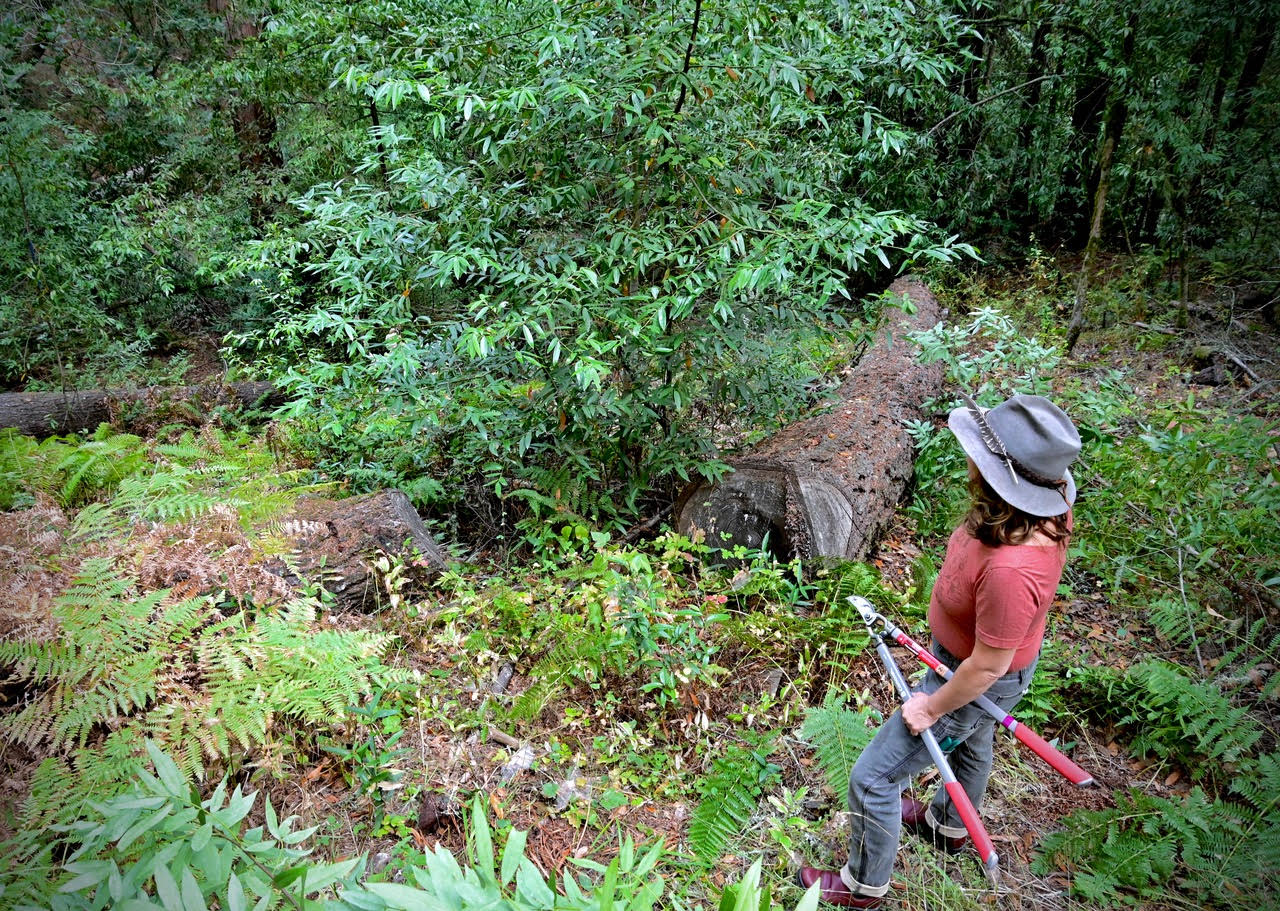October 2021
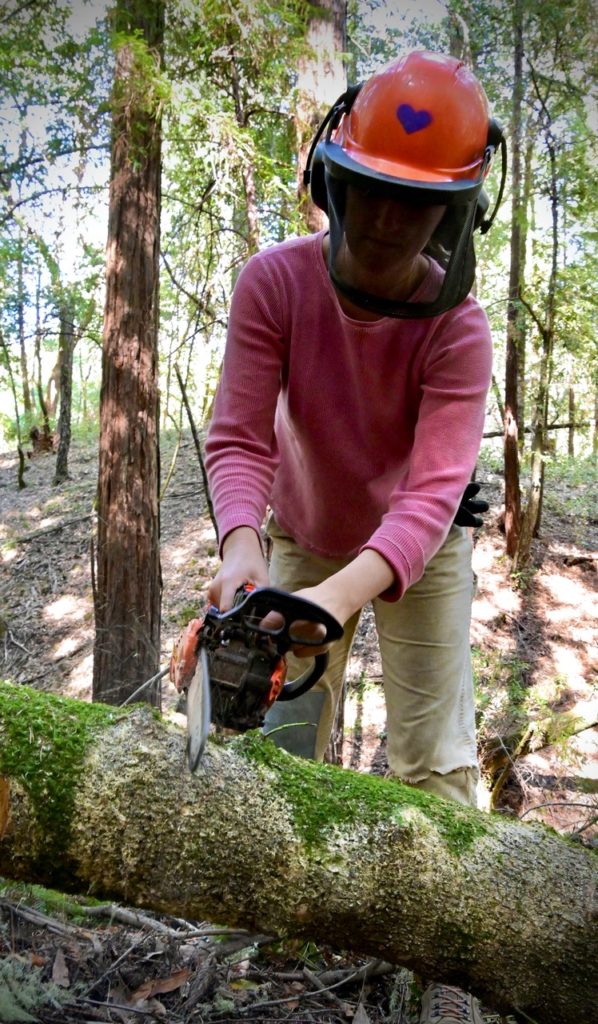
Though the air has been clean at OAEC the past few weeks, we haven’t forgotten that California is still on the heels of a devastating wildfire season (amidst one of the most severe droughts in over a century). This year is not an anomaly, as the rise of catastrophic, climate-driven wildfires in recent years has radically shifted life for people and landscapes across the western U.S. For many, the “new” reality of fire is forcing us to reckon with an old paradigm of fire suppression and the dismissal of Indigenous fire science and stewardship. Wildfire is a powerful teacher, demanding creative adaptation, community care, and ultimately the restoration of a healthy relationship with fire as a keystone process.
But what does this actually look like on the ground and in practice? At OAEC, our 70-acre Wildlands Preserve sits in a particularly high-risk area, straddling the “Wildland Urban Interface,” or the WUI, between Camp Meeker and Occidental, the ancestral territory of the Coast Miwok and Southern Pomo people (now organized as the Federated Indians of Graton Rancheria). OAEC has a long history of organizing, educating, and activating key stakeholders across the county in service of a more sustained and ecoliterate response to wildfire – Brock Dolman and Kathleen Kraft co-founded the West County Fire Safe Council through a Bureau of Land Management grant in 2003. For the past 25 years, we’ve also put considerable energy into technical fire mitigation and restoration projects on the land at OAEC through a “mending the wild” approach — from thinning and limbing trees to applying prescribed burns in our prairie grasslands. That said, we still have a long way to go!
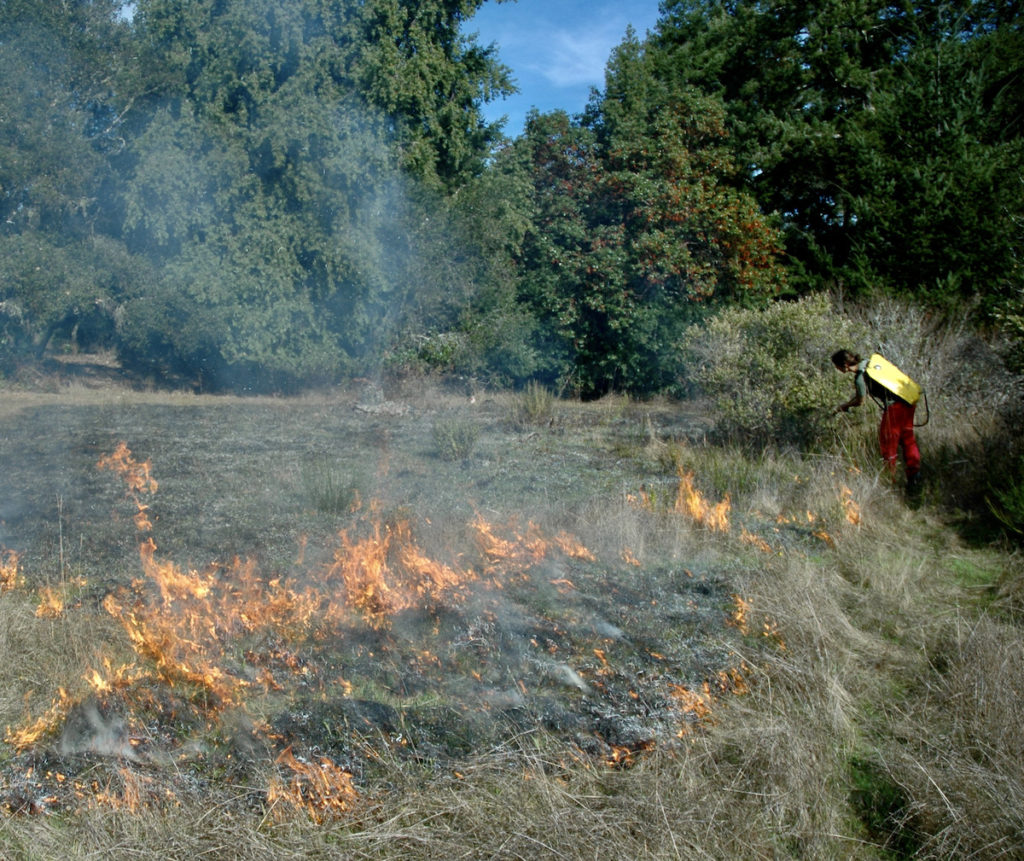
In light of recent wildfires and structural fires (including one that took down our beloved barn last year), the Wildlands team has been hard at work this past year, building our capacity to implement and model a suite of regenerative fire mitigation projects onsite. In July, OAEC was awarded $76,000 through the North Bay Forest Improvement Program (NBFIP) of Rebuild NorthBay Foundation and Gold Ridge RCD for 41 acres of on-site forest stewardship projects that reduce wildfire risk and promote forest health. Given that NBFIP only offers “incentive dollars” or partial payments to landowners, OAEC is also in the process of securing matching funds outside of this program through Natural Resource Conservation Service’s Environmental Quality Incentives Program Conservation Incentive Contract for $52,000. In September, we were excited to commence a number of these hazardous fuel reduction projects with our own OAEC staff crew who will soon be joined by Swift Water Design, Circuit Rider, and others.
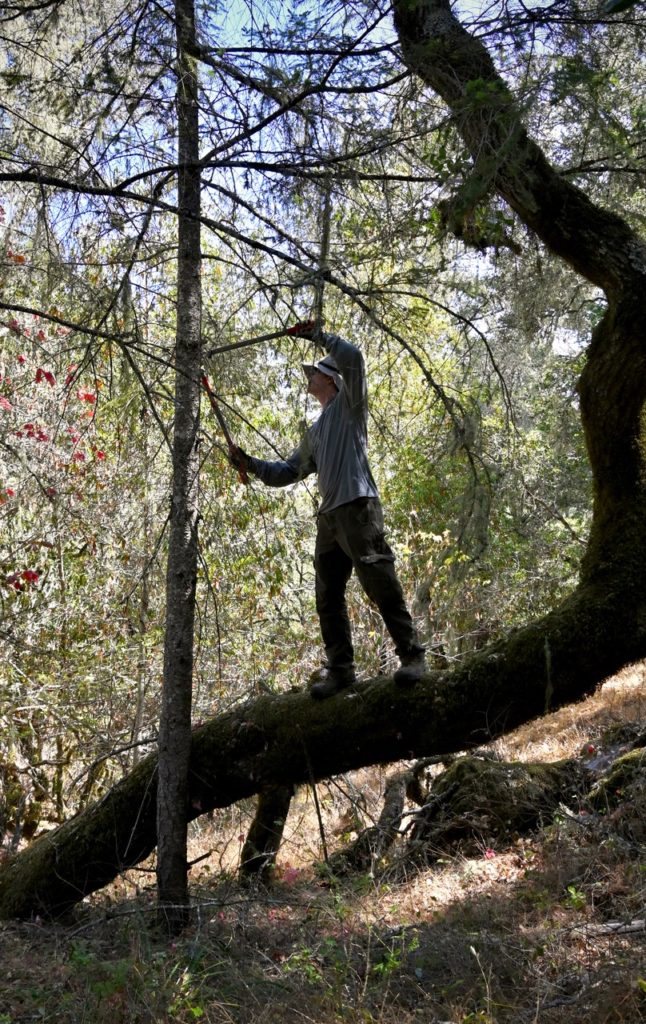
Of course, OAEC is just one piece of the puzzle and a big barrier we face as a community in increasing the pace and scale of this work is the disjointed, patchwork nature of land ownership in Sonoma County, where nearly 90% of land is privately owned. Fire doesn’t recognize fence lines or property boundaries, so it’s critical that we continue to empower our community — from individual landowners to public parks — to think and act as an interconnected whole. We intend to deepen and expand the strategies we’ve learned in organizing grassroots watershed advocacy groups (read about it in our publication “Basins of Relations,”) and apply them within a context of fire.
At Sowing Circle Intentional Community and OAEC, we’re fortunate to share our home in the eastern headwaters of the Dutch Bill Creek with Mighty Arrow Ranch and Two Sisters Place, our next door neighbors and allies in restoration (we fondly call ourselves “the 240,” referring to the 240-acre block of our three parcels). This coalition-building is also happening on a larger scale under the leadership of groups like Safer West County and Fire Safe Sonoma, who just this past spring facilitated a working group of fourteen landowners, including OAEC, representing over 2,600 acres from Monte Rio to Freestone, in identifying shared priorities to reduce wildfire risk and keep our communities safe. Through these kinds of community-driven initiatives, we’ve seen the publication of both the Occidental and Camp Meeker Community Wildfire Protection Plans, which are key to strengthening public safety, citizen education, and community capacity for future organizing.
As articulated in OAEC’s theory of change, we also believe that strengthening the technical skill set and expertise of our local workforce is a critical component of collective adaptation and resilience. Since the late ‘90s, we’ve collaborated with organizations like Marin Conservation Corps (now Conservation Corps North Bay), Sonoma Youth Ecology Corps, and Sonoma State University. Today, we’re dreaming into a new eco-justice restoration and workforce development program that not only deepens participant’s ecoliteracy, but also creates living-wage career pathways in the fields of restoration and conservation. In August, a dozen students from Santa Rosa Junior College’s Forest Management class came to OAEC for an oak woodland restoration project in lieu of a written final exam. Together, we worked on liberating a precarious patch of oaks from encroaching Douglas firs, using the limbed and thinned material to build a habitat pile for woodrats, the critical prey base for the Northern Spotted Owl on our property. We also had the opportunity to do a site tour in August with the awesome Conservation Corps North Bay (CCNB) crew — a midday break from their evacuation route and roadside clearance project just over the fence along Coleman Valley Road.
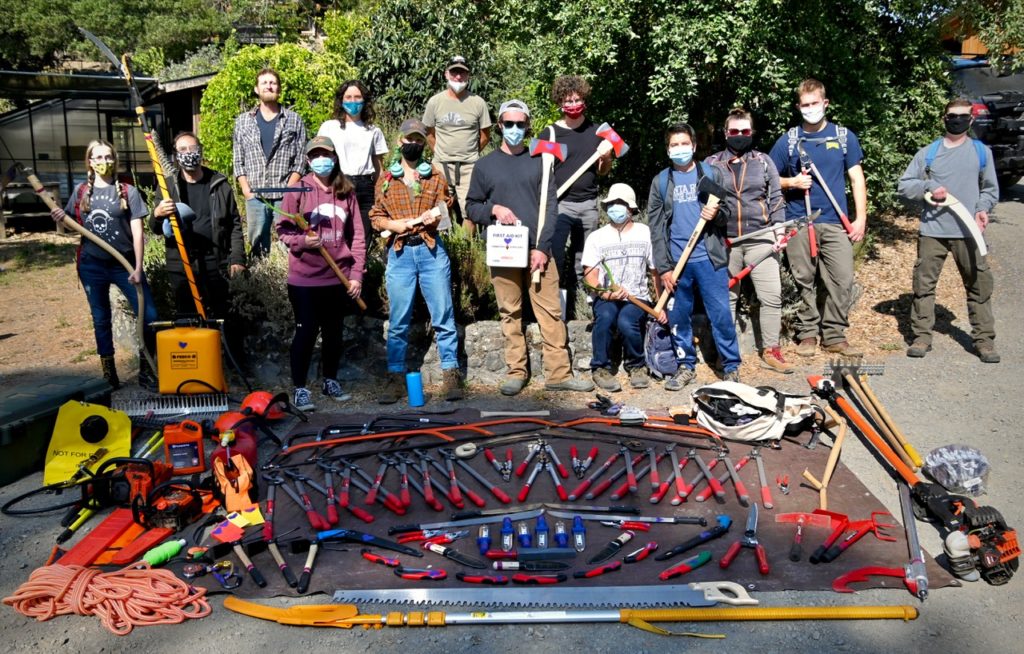
In showing up for local organizing and education efforts, we’re also supporting a paradigm shift in conventional restoration and land management towards a biocultural, regenerative, and environmental justice-centered approach. While we’re encouraged to see increased public support and funding opportunities for wildfire mitigation, as systems thinkers, we’re just as concerned with the process of restoration itself — that is, how our activities on the land do or do not serve the greater whole of an ecosystem. How can we “compose with rather than impose upon” and be in active dialogue with the places we call home? In this moment of heightened fear around fire and climate crisis, we hope to elevate the opportunity for radical transformation and the truth that fire resiliency is ultimately only possible when we also uplift water, soil, our communities, and our more-than-human kin.
